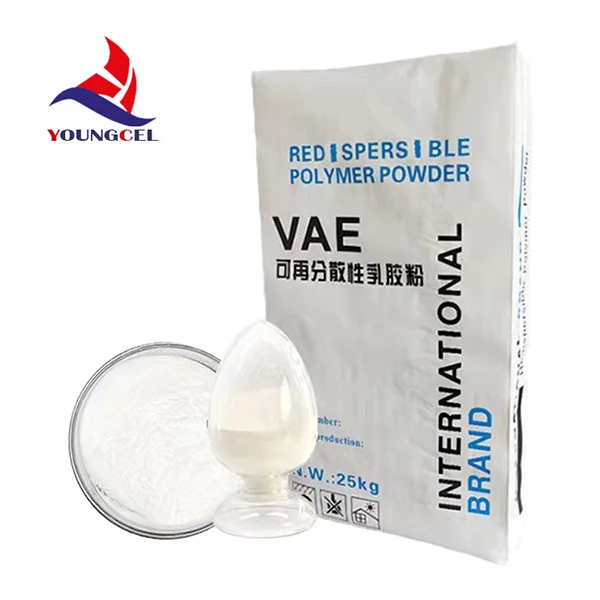Understanding Chemical % HPMC (Hydroxypropyl Methylcellulose)
Hydroxypropyl methylcellulose (HPMC) is a versatile and widely used polymer, primarily derived from cellulose, that has found applications across various industries, including pharmaceuticals, food, construction, and cosmetics. Its unique properties make it an essential component in many products, and understanding its chemical composition and usage can provide valuable insights into its functionality.
What is HPMC?
Hydroxypropyl methylcellulose is a non-ionic, water-soluble polymer that is characterized by its ability to form films and thicken solutions. The chemical structure of HPMC consists of cellulose chains with hydroxypropyl and methyl groups substituting some of the hydroxyl groups present on the cellulose backbone. The degree of substitution varies, which affects the solubility and viscosity of the final product. This versatility allows manufacturers to tailor HPMC for specific applications by adjusting its chemical composition.
Chemical Composition and Properties
The chemical formula of HPMC reflects its complex structure, but it is primarily composed of carbon, hydrogen, and oxygen. The percentage of hydroxypropyl and methoxy groups integrated into the cellulose chain defines the properties of HPMC, including its viscosity in aqueous solutions, gel-forming capacity, and thermal stability.
HPMC is categorized based on the degree of substitution
1. Low-substitution HPMC - This variant has a lower percentage of methoxy and hydroxypropyl groups, resulting in a higher gelation temperature and increased viscosity. 2. High-substitution HPMC - This version includes a larger quantity of substitution groups, making it soluble at higher temperatures and providing a lower viscosity.
This tunability makes HPMC suitable for diverse applications, enabling it to serve as a binder, thickener, and stabilizer.
Applications of HPMC
chemical hpmc hydroxypropyl methyl cellulose

Pharmaceuticals
In the pharmaceutical industry, HPMC plays a crucial role as a controlled-release agent in drug formulations. It helps sustain the release of active pharmaceutical ingredients (APIs), enhancing their bioavailability and therapeutic efficacy. HPMC is also used in ophthalmic preparations, providing lubrication and stability to eye drops and ointments.
Food Industry
HPMC is increasingly employed as a food additive, where it serves as a thickening and emulsifying agent. Its ability to form stable gels and emulsions helps improve texture and mouthfeel in various food products, including sauces, dressings, and dairy products. Moreover, HPMC is known for its role in gluten-free formulations, helping to enhance the texture and viscosity of baked goods.
Construction Industry
In construction, HPMC is utilized as a water-retention agent in cement-based materials. By improving workability and extending open time, HPMC ensures that products like tile adhesives and plasters perform optimally. Its water-retention properties help maintain moisture during the curing process, leading to better strength and durability of construction materials.
Cosmetics
HPMC is favored in the cosmetic industry for its thickening and stabilizing properties. It is commonly found in lotions, creams, and gels, where it enhances product consistency and provides a pleasant feel upon application. Additionally, HPMC can be found in hair styling products, where it imparts a desirable hold without compromising hair health.
Conclusion
In summary, hydroxypropyl methylcellulose (HPMC) is a chemically modified cellulose compound that offers numerous beneficial properties across various industries. Its adaptability, driven by the percentage and type of substituent groups, allows for customized formulations that meet specific performance criteria. Understanding the chemical composition and applications of HPMC not only highlights its significance in industrial processes but also underscores its role in improving product quality across pharmaceutical, food, construction, and cosmetic sectors. As research continues to evolve, it is likely that the applications of HPMC will expand, further solidifying its status as a crucial polymer in modern manufacturing.
-
Rdp Powder: Key Considerations for Wholesalers in the Building Materials IndustryNewsJul.08,2025
-
Key Considerations for Wholesalers: Navigating the World of Hpmc - Based ProductsNewsJul.08,2025
-
Hpmc Detergent: Key Considerations for WholesalersNewsJul.08,2025
-
Key Considerations for Wholesalers: China Hpmc For Tile Adhesive, Coating Additives, Concrete Additives, and MoreNewsJul.08,2025
-
Crucial Considerations for Wholesalers: Navigating the World of Construction MaterialsNewsJul.08,2025
-
Key Considerations for Wholesalers Sourcing Additive For Cement, Additive For Concrete, Additive For Putty from Additive Manufacturer Shijiazhuang Gaocheng District Yongfeng Cellulose Co., Ltd.NewsJul.08,2025




